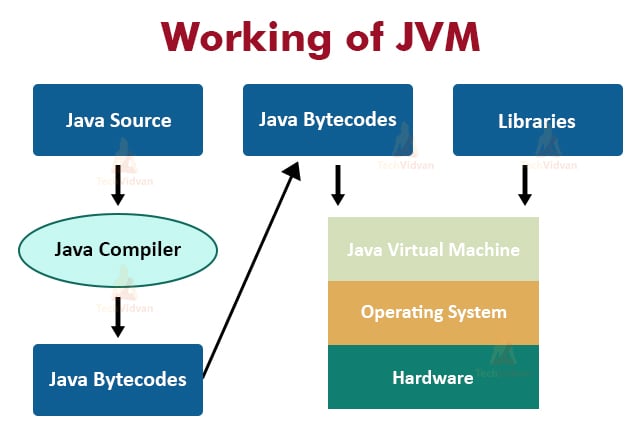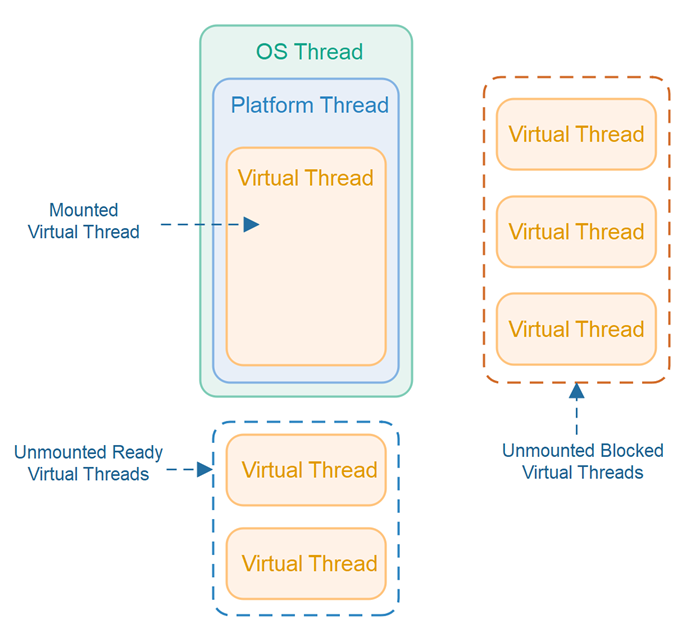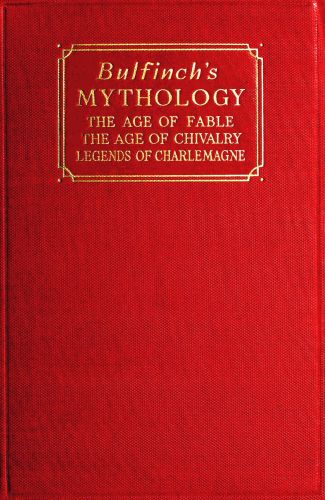The Future of Java Performance: Unpacking the Latest News on Project Valhalla
In the ever-evolving world of Java ecosystem news, major updates often steal the spotlight. The recent buzz around virtual threads from Project Loom and enhanced native interoperability from Project Panama has rightly excited developers. However, simmering just beneath the surface is a project poised to fundamentally reshape the Java Virtual Machine (JVM) and redefine high-performance computing in Java: Project Valhalla. While it may seem more academic than its headline-grabbing peers, the latest early-access builds and JEP (JDK Enhancement Proposal) drafts signal that Valhalla is moving closer to reality, promising to fix some of the language’s oldest performance trade-offs.
Project Valhalla’s core mission is to augment the Java type system with value objects and user-defined primitives, alongside a powerful upgrade to generics. The goal is simple yet profound: to give developers the ability to “code like a class, but work like an int.” This means combining the expressiveness and safety of object-oriented programming with the raw memory layout and performance of primitive types. This article delves into the latest developments from Project Valhalla, exploring its core concepts, practical implications, and how it will interact with other modern Java features to usher in a new era of performance and efficiency.
Section 1: The Heart of Valhalla – Understanding Value Objects
To appreciate what Project Valhalla brings to the table, we must first understand a fundamental constraint in Java today. The type system is split into two worlds: primitive types (int, double, etc.) and reference types (objects). Primitives are pure values, stored directly on the stack or within other objects, making them incredibly efficient. Objects, however, come with significant overhead.
The Problem with “Everything is an Object”
When you create an object in Java (e.g., new Point(10, 20)), several things happen. The JVM allocates memory on the heap, adds an object header (containing metadata for locking, garbage collection, and type information), and returns a reference (a pointer) to that memory location. This indirection has consequences:
- Memory Footprint: The object header and pointer add overhead to every single object, which can be substantial for small, numerous objects.
- Cache Locality: An array of objects, like
Point[], is actually an array of pointers. The actualPointobjects can be scattered across the heap, leading to frequent CPU cache misses when iterating, a major bottleneck discussed in Java performance news. - Garbage Collection Pressure: Millions of short-lived, small objects put significant pressure on the garbage collector.
Introducing Primitive Classes (Value Objects)
Project Valhalla introduces the concept of primitive classes (previously called value classes). These are special classes that describe types that lack a stable object identity and can have their data laid out “inline” or “flattened” by the JVM. They behave like classes from a developer’s perspective but have the performance profile of primitives.
A primitive class is declared with new contextual keywords. While the exact syntax is still evolving, early proposals have used `primitive class`.
Consider a simple coordinate class. Today, it’s a standard reference type. With Valhalla, it could become a primitive class.
// The "classic" way - a standard reference type
public final class PointObject {
private final int x;
private final int y;
public PointObject(int x, int y) {
this.x = x;
this.y = y;
}
// equals, hashCode, getters...
}
// The future with Valhalla - a primitive class (hypothetical syntax)
// Note: This is a conceptual example based on JEP drafts.
primitive public final class PointValue {
private final int x;
private final int y;
public PointValue(int x, int y) {
this.x = x;
this.y = y;
}
// equals, hashCode, getters...
}The PointValue class, unlike PointObject, has no identity. Two instances are considered equal if their x and y values are the same. The JVM is free to optimize it heavily, such as passing it by value in method calls or flattening it in memory structures, which is a game-changer for the JVM news landscape.
Section 2: Under the Hood – Memory Layout and Performance Gains

The true magic of Project Valhalla lies in how the JVM handles these new primitive classes at runtime. The performance gains come from eliminating the layers of indirection that plague traditional object layouts, a topic of intense interest in the OpenJDK news community.
Flattening Data Structures: The Memory Revolution
Let’s revisit the array example. An array of 1,000 PointObject instances today is not a contiguous block of 1,000 points. It’s a contiguous block of 1,000 pointers, each pointing to a separate PointObject potentially scattered all over the heap. This is an “Array of Pointers.”
With a primitive class like PointValue, an array PointValue[] would be a single, contiguous block of memory. The layout would look like: [x0, y0, x1, y1, x2, y2, ...]. This is a “Flattened Array.”
public class MemoryLayoutExample {
public static void main(String[] args) {
// Current reality: Array of Pointers
// Memory layout is [ptr1, ptr2, ptr3, ...]
// Each ptr points to a PointObject on the heap with its own header.
// This leads to poor cache locality.
PointObject[] objectArray = new PointObject[1000];
for (int i = 0; i < 1000; i++) {
objectArray[i] = new PointObject(i, i);
}
// Future with Valhalla: Flattened Array
// Memory layout would be a single, contiguous block: [x0, y0, x1, y1, ...]
// No object headers, no pointers, perfect cache locality.
// This is a massive win for performance-critical code.
/*
PointValue[] valueArray = new PointValue[1000];
for (int i = 0; i < 1000; i++) {
valueArray[i] = new PointValue(i, i);
}
*/
System.out.println("Demonstrating the conceptual difference in memory layout.");
}
// Standard class with object identity
public static final class PointObject {
private final int x;
private final int y;
public PointObject(int x, int y) { this.x = x; this.y = y; }
}
// Hypothetical primitive class for demonstration
// primitive public final class PointValue { ... }
}This flattened layout dramatically improves CPU cache utilization. When the CPU loads the first element, subsequent elements are likely already in the cache, making iteration incredibly fast. This is crucial for scientific computing, financial modeling, and any domain that processes large datasets.
Identity vs. State and the Nullability Question
A core tenet of Valhalla is that primitive classes lack object identity. You cannot use == to check for reference equality (it will compare state instead), and you cannot synchronize on an instance of a primitive class. This is a deliberate design choice that enables the JVM’s optimizations.
Furthermore, primitive classes are designed to be non-nullable. A variable of a primitive class type will always hold a value. If not explicitly initialized, it will hold a default value, typically composed of the default values of its fields (e.g., a PointValue would default to (0,0)). This is a significant step toward eliminating NullPointerExceptions and can render patterns like the Null Object pattern news less relevant for these types, contributing to better overall Java security news by reducing a common source of bugs.
Section 3: The Bigger Picture – Universal Generics and Ecosystem Impact
While primitive classes are a massive feature, Project Valhalla’s scope is even broader. Its second major goal is to fix one of the longest-standing limitations in Java: generics.
Solving the Generics Dilemma with Universal Generics
Since their introduction, Java generics have worked through a process called type erasure. This means that at runtime, an ArrayList<String> is just an ArrayList. This design has a major limitation: generics can only operate on reference types. You cannot create an ArrayList<int>; you must use the wrapper class ArrayList<Integer>. This process of converting between primitives and their wrapper types is called boxing and unboxing, and it introduces significant performance overhead.
Project Valhalla aims to introduce Universal Generics, allowing generic algorithms to operate over any type, including primitives and the new primitive classes, without the cost of boxing.

import java.util.ArrayList;
import java.util.List;
public class GenericsExample {
public static void main(String[] args) {
// Current way: Boxing is required
// Each `i` is boxed from an `int` to an `Integer` object.
// This creates many small objects, stressing the garbage collector.
List<Integer> integerList = new ArrayList<>();
for (int i = 0; i < 10_000_000; i++) {
integerList.add(i); // Auto-boxing: int -> Integer
}
long sum = 0;
for (Integer value : integerList) {
sum += value; // Auto-unboxing: Integer -> int
}
System.out.println("Sum with boxing: " + sum);
// Future with Valhalla: Universal Generics (conceptual)
// This would create a specialized ArrayList that stores `int` primitives directly.
// No boxing, no object overhead, massive performance improvement.
/*
List<int> primitiveList = new ArrayList<>();
for (int i = 0; i < 10_000_000; i++) {
primitiveList.add(i); // No boxing!
}
*/
}
}This change will be revolutionary for library and framework developers. Collections, streams, and other generic APIs will become dramatically more efficient when working with primitive-like data. This is a key development in Java SE news that will affect everything from Spring Boot news to Hibernate news, as data-intensive operations become faster and more memory-efficient.
Synergy with Other Projects: Loom and Panama
Valhalla doesn’t exist in a vacuum. Its features will have a powerful synergistic effect with other modern Java projects.
- Project Loom News: Virtual threads make it cheap to have millions of concurrent tasks. Passing lightweight, identity-less value objects between these threads will be far more efficient than passing heap-allocated objects, significantly reducing GC contention in highly concurrent systems. This is a major update for Java concurrency news.
- Project Panama News: When interacting with native libraries (e.g., C/C++), developers often need to model native memory layouts precisely. Primitive classes will provide a natural, safe, and high-performance way to represent these C-style
structsdirectly in Java code without manual memory management.
Section 4: Practical Adoption and Best Practices
As Project Valhalla inches closer to inclusion in a future Java release, developers can start preparing their codebases and mindsets. The evolution from **Java 8 news** to **Java 21 news** has consistently pushed the language towards more declarative and data-oriented styles.
Identifying Candidates for Primitive Classes
Not everything should be a primitive class. The ideal candidates are small, immutable data aggregates whose primary purpose is to carry data. Think of types that represent a single, cohesive value:
- Mathematical constructs:
ComplexNumber,Vector2D,Matrix - Measurements:
Money, _Weight,Temperature - Data carriers:
Point,Color,DateRange
In contrast, types that require a stable identity, manage resources, or have complex lifecycles (e.g., User, DatabaseConnection, Order) should remain as standard classes.
Preparing Your Codebase Today with Records
The best way to prepare for Valhalla is to embrace Java Records, a feature that has been a highlight of recent Java 17 news. Records are a conceptual stepping stone to primitive classes.
A record is a transparent, immutable carrier for data. It automatically provides state-based implementations of equals(), hashCode(), and toString(). By using records, you are already adopting a value-based programming model.
/**
* Using a record is the best way to prepare for Valhalla.
* It encourages immutability and state-based equality, the core
* principles of a value/primitive object.
* When Valhalla arrives, changing this to a primitive class
* will be a small, logical step.
*/
public record Coordinate(double latitude, double longitude) {
// This record is already aligned with value-based semantics.
// It's immutable, and equality is based on latitude and longitude.
}
public class RecordAdoption {
public static void main(String[] args) {
Coordinate c1 = new Coordinate(40.7128, -74.0060); // New York
Coordinate c2 = new Coordinate(40.7128, -74.0060); // New York
// Records already implement state-based equality, just like
// primitive classes will.
System.out.println("c1 equals c2: " + c1.equals(c2)); // true
System.out.println(c1);
}
}By migrating your Data Transfer Objects (DTOs) and other simple data holders to records, you not only clean up your code today but also position it for a seamless transition to the more performant primitive classes of tomorrow. Build tools like Maven and Gradle, central to Maven news and Gradle news, fully support records, making adoption straightforward.
Conclusion: The Dawn of a New Performance Era
Project Valhalla represents one of the most significant undertakings in the history of the Java platform. It is a meticulous and ambitious effort to address fundamental performance limitations without sacrificing the safety and expressiveness that developers love. By introducing primitive classes and universal generics, Valhalla promises to flatten memory layouts, reduce garbage collection pressure, and make generic code as fast as specialized primitive code.
The key takeaways for developers are clear: Valhalla will deliver a massive performance boost for data-intensive applications, make the language safer by promoting non-nullable value types, and finally unify the two worlds of primitives and objects. As we monitor the latest OpenJDK news from distributors like Adoptium and Azul Zulu, the best course of action is to start thinking in terms of values, not just objects. Embrace immutability, adopt records where appropriate, and prepare for a future where high-performance Java is more accessible than ever before.

